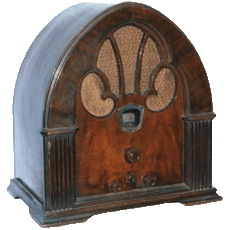11-20-2005, 08:31 PM
Is that an iron-core choke or a tapped inductor? Your schematic shows a tapped choke symbol.
DC cannot flow thu the circuit as drawn. The meter is essentially in limbo with only one INPUT termimal with a DC connection. Check the placement of that cap. It may be a bypass cap and not a coupling cap???
A Shadow Meter movement can only respond to D.C. current.
DC cannot flow thu the circuit as drawn. The meter is essentially in limbo with only one INPUT termimal with a DC connection. Check the placement of that cap. It may be a bypass cap and not a coupling cap???
A Shadow Meter movement can only respond to D.C. current.
Chuck Schwark,
The Philco Repair Bench
[Image: http://www.philcorepairbench.com/images/philog3tiny.gif]
http://www.philcorepairbench.com



![[-] [-]](https://philcoradio.com/phorum/images/bootbb/collapse.png)


